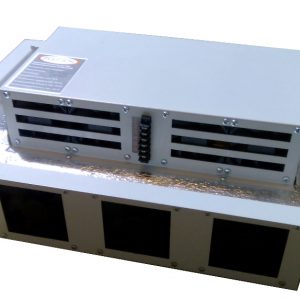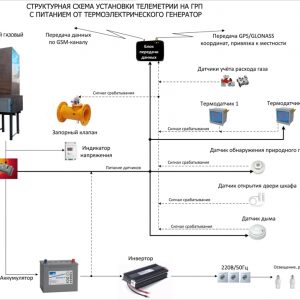Application, structure and characteristics of radionuclide thermoelectric generators – RTGs
Radionuclide thermoelectric generator – RTG is based on the conversion of heat released during radioactive decay of the radionuclide, into electrical energy direct current through the semiconductor thermoelectric battery (hereinafter PTAB).
The main areas of current and future applications of RTGs are:
1.Using them as power sources for navigation objects (light-beacons, beacons, beacons-defendants, navigation and marker posts), located in remote and inaccessible parts of the coast and Islands of the seas washing territory of Russia, including along the Northern sea route.
2.Use them to power the seismic equipment for the continuous monitoring of seismic activity in order to detect nuclear tests.
3.Use them to power Autonomous items of radio relay communication lines and stand-alone weather observation points..
4.Use them as power sources for scientific equipment space and subsea applications, hardware alarm critical facilities.
Radionuclide thermoelectric generators, their principle actions are the most reliable self-contained sources of electrical energy DC. They work at negative and high positive temperatures of the environment, in space, on earth, under earth and under water. Radionuclide thermoelectric generators are characterized by the output electric power from fractions of Watts to tens of Watts and the output electric voltage from a few volts to tens of volts, maintenance-free service life more than ten years.
Found the widest application in the national economy RITEG, type Beta-M shown in Fig. 1. There were manufactured and operated more than 800 pieces.
RTGs is characterized by the following parameters:
— maintenance-free lifetime at actual operating results to 20 years;
— output electric power at the beginning of the service life – not less than 9,0 W;
— work output electric voltage of -14 V;
weight – 550 kg;
-operating temperature range – from -60 to + 50 ºC.
In the RTGs as a heat source used radionuclide heat source RIT-90-230, on the basis of the radionuclide strontium-90, the thermal power of 230 watts.
Structural diagram of the RITEG, type Beta-M, which is typical for RTGs other types.
The main elements of the RTGs are as follows:
— radionuclide heat source RIT-90;
— semiconductor thermoelectric battery PTAB;
radiation (biological) protection;
— radiator for heat.
The main characteristics of the developed RTGs watt range of electric power with the use of radionuclide heat sources based on Strontium-90 are shown in tables 1 and 2, and pictures of some of them in figures 1 and 2.

RTG «Beta-M»
Picture 1.
The main characteristics of low temperature RTGs on stroncii-90:
Table 1
| Parameters | RTG model | |||||||
| Beta-M | Efir | IEU-1 | IEU-2 | IEU-2M | Penguin | 57 IK | ||
| 1 | Electrical power, W |
9,0 |
30 |
80* |
14* |
20* |
2,0 |
0,5 |
| 2 | Voltage, V | 6 or 14 | 35 | 24 | 6 | 14 | 3,0 | 1,3 |
| 3 | Heat power, W | 230 | 680 | 2130 | 580 | 650 | 60 | 29 |
| 4 | Dimensions, mm
— diameter (length) — height — width |
600 655 — |
805 1275 — |
(1510) 1350 760 |
900 720 — |
(900) 870 750 |
400 300 — |
400 360 — |
| 5 | Weight, kg | 565 | 1200 | 2300 | 746 | 600 | 300 | 80 |
| 6 | Life, years | 20 | 20 | 20 | 20 | 20 | 20 | 20 |
| 7 | Eff, % | 3,9 | 4,4 | 3,7 | 2,4 | 3,1 | 3,35 | 1,7 |
* — all life
The main characteristics of the middle temperature RTGs on stroncii -90
Table 2
| Parameters | RTG model | ||||
| Grab | Gong | Gorn | Senostav | ||
| 1 | Electrical power, W |
120 |
18 |
60 |
80* |
| 2 | Voltage, V | 28 или 14
или 7 |
14 | 28 или 14
или 7 |
28 |
| 3 | Heat power, W | 1698 | 300 | 1091 | 1794 |
| 4 | Dimensions, mm
— diameter (length) — height — width |
850 990 — |
680 945 — |
850 1230 — |
(920) 1450 760 |
| 5 | Weight, kg | 850 | 600 | 1050 | 1250 |
| 6 | Life, years | 20 | 20 | 20 | 20 |
| 7 | Eff, % | 7,0 | 6,0 | 5,5 | 4.5 |

RTG Senostav
Picture 2.
Used radionuclides
Strontium-90
A product of nuclear reactors, refers to radioactive waste.
The half-life of 28 years.
Requires massive radiation shielding
(specific El. the generator power of 0.06 W/kg).
The mass of RTGs on Stroncii-90- 500 -2000 kg.
Used only in stationary devices.
The manufacturing cost is low.
Another class of RTG is the watt power generators with the use of radionuclide heat sources based on plutonium-238 for specific purposes or made to special order.
Main technical specifications of RTG in this class are given in table. 3.
Table 3
| Parameters | Model RTG | ||||
| 1 | 2 | 3 | 4 | ||
| 1 | Electrical power, W | 0,02 | 2,9 | 12,0 | 9,0 |
| 2 | Voltage, V | 3,0 | 3,5 | 3,5 | 3,5 |
| 3 | Heat power, W | 1,5 | 85 | 200 | 170 |
| 4 | Dimensions, mm
— diameter (length) — height
|
60 70 |
200 234 |
300 300 |
250 255 |
| 5 | Weight, kg | 0,2 | 9 | 22 | 15 |
| 6 | Life, years | 50 | 20 | 20 | 20 |
| 7 | Eff, % | 1,3 | 3,4 | 5,9 | 5,1 |
RTGs electric power of 12 W is shown in Figure 3

Figure 3
Used radionuclides
Plutonium – 238
The half-life of 87 years.
The specific heat of 0.49 W/g (oxide PuO2)
Radiation protection is not required
The isotope is produced purposefully. Production is halted. Stocks are extremely limited. Manufactured products in single units of space and special applications.
Time stopped under international agreements.
If necessary, the operating time can be renewed up to 5000 Watts of heat per year.
The cost of production is high.




